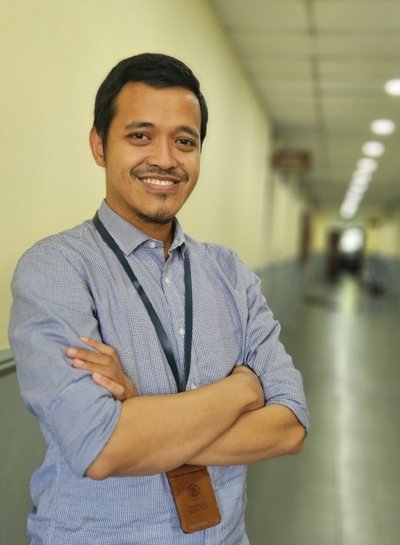Synergy of Airborne Thermal Infrared Imagery and Light Detection and Ranging for Geothermal Mapping
Yan Restu Freski is a PhD student in the Department of Applied Earth Sciences. (Co)Promotors are prof.dr. M. van der Meijde and dr. C.A. Hecker from the Faculty ITC and dr.ir. A. Setianto from the University Gadjah Mada.
 The global energy transition, crucial for climate action, emphasizes low-carbon sources like geothermal, which can provide reliable baseload power. Indonesia, with geothermal resources estimated at 28.91 GW, has substantial potential to lead in this sector. However, challenges like high exploration costs, regulatory hurdles, and land conflicts hinder its full development.
The global energy transition, crucial for climate action, emphasizes low-carbon sources like geothermal, which can provide reliable baseload power. Indonesia, with geothermal resources estimated at 28.91 GW, has substantial potential to lead in this sector. However, challenges like high exploration costs, regulatory hurdles, and land conflicts hinder its full development.
Thermal infrared (TIR) data is valuable in early geothermal exploration, as it detects surface temperature anomalies that suggest geothermal activity. However, TIR has limitations, particularly in Indonesia, where high-resolution platforms are costly, and nighttime airborne surveys, ideal for clear thermal readings, face safety restrictions. These restrictions lead to daytime surveys, which introduce solar heating effects that can obscure true geothermal signatures, especially in rugged and vegetated terrains.
LiDAR offers an effective complement to TIR. By creating detailed 3D maps, LiDAR helps identify terrain features, enabling the differentiation of solar heating effects from genuine geothermal anomalies. LiDAR’s laser return intensity (LRI) can highlight hydrothermally altered rocks, as laboratory studies suggest that LRI values vary with rock alteration levels. This distinction remains unaffected by temperature, making LRI a promising proxy for geothermal areas.
Field testing of LRI in combination with TIR and geological mapping can refine geothermal anomaly detection under real-world conditions, where soil moisture and vegetation influence readings. By integrating TIR and LiDAR, geothermal exploration in Indonesia can become more precise, accelerating resource development in line with the country’s clean energy objectives. With advancements in these technologies, Indonesia could tap into its geothermal reserves more efficiently, supporting a sustainable energy future.




